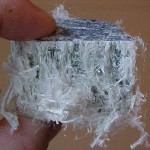Sometimes the Government just might work as it was intended.
In an earlier post, I reported on a lawsuit brought by a coalition of environmental and consumer safety groups requesting declaratory and injunctive relief under the Administrative Procedure Act to force the FDA to respond to a 2006 petition seeking action by the agency to assure the safety of members of the public exposed to nanomaterials, particularly nanoparticles in sunscreens. On May 14, 2012, the coalition voluntarily dismissed its action, International Center for Technology Assessment v. Hamburg, a case that had been brought in federal court for the Northern District of California (No. 11-6592).
In other posts on this blog, I have reported on the draft guidances recently issued by the FDA on the safety of nanomaterials in food, food packaging, and cosmetics, as well as the upcoming International Cooperation on Cosmetics Regulation (ICCR), to be hosted by the FDA. The coalition has withdrawn its lawsuit because the FDA has in fact finally responded to the earlier petition by issuing the draft guidances. Although attorneys for the coalition have emphasized that the FDA’s response does not propose all the relief the coalition sought in its lawsuit, at the present time the FDA is showing interest in the safety of engineered nanomaterials in products within the agency’s jurisdiction. The lawsuit had sought, among other things, regulation of these nanomaterials. But the FDA guidance documents made recommendations for voluntary measures by industry, not new regulation. This, of course, leaves open the possibility of a future lawsuit challenging the steps taken – or not taken – by the FDA in furtherance of the safety initiatives.
Our high school civics classes teach us that the tripartite structure of the federal Government is intended to allow the various parts of the Government to act as a check on the actions or inactions of the other parts. In recent years, the judicial system has been much maligned. In the matter of nanomaterials and the FDA, the threat of judicial intervention – being told by the courts what it should do – was likely one (and only one) motivation for the FDA to pursue a safety agenda for nanomaterials. Instead of needlessly consuming resources at this stage, the coalition withdrew its lawsuit when the FDA moved forward on this subject. So let’s give a hand all around for the Government working as it was intended.
The withdrawal of the coalition’s lawsuit was reported by
Pat Rizzuto, Coalition Withdraws Lawsuit Against FDA Following Agency’s Release of Guidance, 100 Daily Env’t Rep. (BNA) A-15 (May 24, 2012) (by subscription)

 It had to happen sooner or later. And it’s happening now. A coalition of nonprofit consumer safety and environmental groups brought an action on December 21 in federal district court in California against the Food and Drug Administration (FDA). The action seeks an order for declaratory and injunctive relief under the Administrative Procedure Act to require the FDA to respond to a petition filed with the FDA in 2006 which sought action by the agency to assure the safety of the public exposed to nanomaterials, particularly sunscreen products. The requested relief is detailed on pages 3-4 of the petition. The lawsuit is International Center for Technology Assessment v. Hamburg (N.D. Calif., CV 11-6592).
It had to happen sooner or later. And it’s happening now. A coalition of nonprofit consumer safety and environmental groups brought an action on December 21 in federal district court in California against the Food and Drug Administration (FDA). The action seeks an order for declaratory and injunctive relief under the Administrative Procedure Act to require the FDA to respond to a petition filed with the FDA in 2006 which sought action by the agency to assure the safety of the public exposed to nanomaterials, particularly sunscreen products. The requested relief is detailed on pages 3-4 of the petition. The lawsuit is International Center for Technology Assessment v. Hamburg (N.D. Calif., CV 11-6592). In 2010, the U.S. Supreme Court issued a closely-watched decision on patentable subject matter under § 101 of the Patent Act, Bilski v. Kappos, 130 S. Ct. 3218 (2010). The Court has now granted cert in another case on patentable subject matter – Prometheus Laboratories, Inc. v. Mayo Collaborative Services, in which the Federal Circuit Court of Appeals held in 2010 that certain medical inventions met the requirements of patentable subject matter in § 101. Prometheus was the sole and exclusive licensee of certain patents that claim methods for determining the optimal dosage of thiopurine drugs used to treat gastrointestinal and non-gastrointestinal autoimmune diseases. When Prometheus sued Mayo for patent infringement, Mayo filed a motion for summary judgment of invalidity, arguing that the patents in question were invalid because they claimed subject matter unpatentable under the Patent Act, 35 U.S.C. § 101. Specifically, Mayo argued that the patents impermissibly claimed natural phenomena – i.e. the correlations between drug metabolite levels and efficacy and toxicity – and not patentable inventions. In 2008, the district court granted Mayo’s motion for summary judgment of invalidity.
In 2010, the U.S. Supreme Court issued a closely-watched decision on patentable subject matter under § 101 of the Patent Act, Bilski v. Kappos, 130 S. Ct. 3218 (2010). The Court has now granted cert in another case on patentable subject matter – Prometheus Laboratories, Inc. v. Mayo Collaborative Services, in which the Federal Circuit Court of Appeals held in 2010 that certain medical inventions met the requirements of patentable subject matter in § 101. Prometheus was the sole and exclusive licensee of certain patents that claim methods for determining the optimal dosage of thiopurine drugs used to treat gastrointestinal and non-gastrointestinal autoimmune diseases. When Prometheus sued Mayo for patent infringement, Mayo filed a motion for summary judgment of invalidity, arguing that the patents in question were invalid because they claimed subject matter unpatentable under the Patent Act, 35 U.S.C. § 101. Specifically, Mayo argued that the patents impermissibly claimed natural phenomena – i.e. the correlations between drug metabolite levels and efficacy and toxicity – and not patentable inventions. In 2008, the district court granted Mayo’s motion for summary judgment of invalidity. Earlier
Earlier In my previous post, I indicated that I would be moving on to discuss the relevancy arm of the Daubert admissibility test. It turns out I have a few more thoughts about the reliability arm.
In my previous post, I indicated that I would be moving on to discuss the relevancy arm of the Daubert admissibility test. It turns out I have a few more thoughts about the reliability arm.